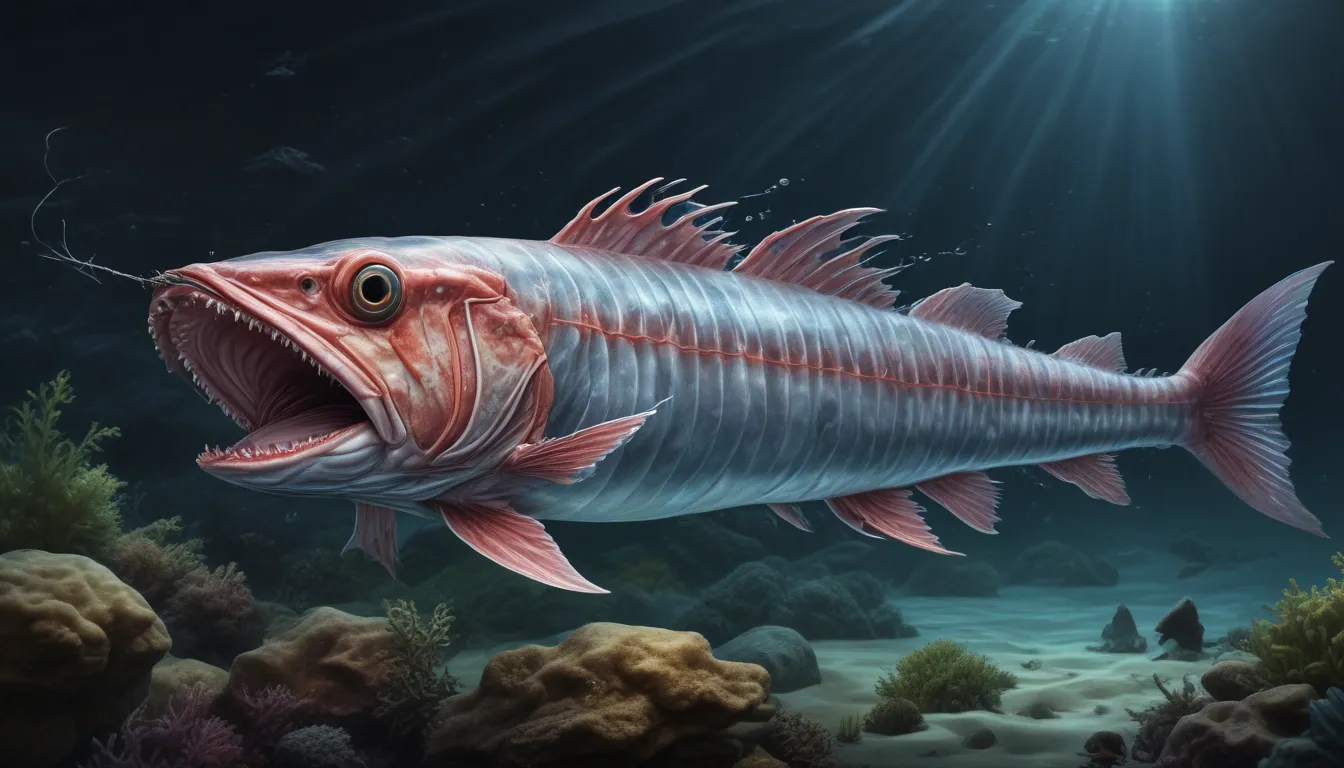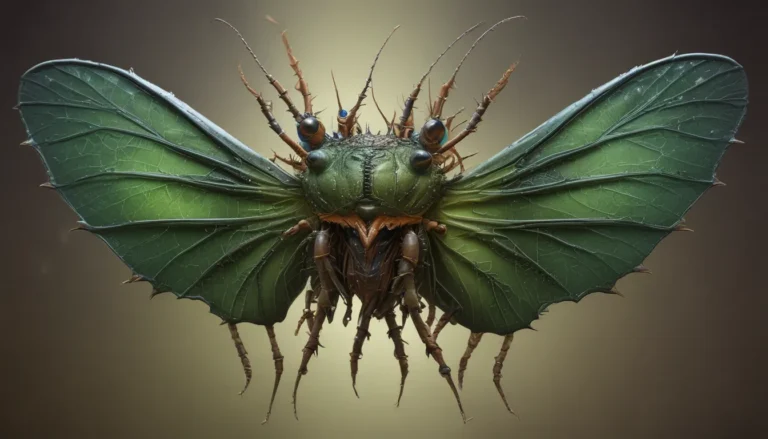The pictures we use in our articles might not show exactly what the words say. We choose these pictures to make you interested in reading more. The pictures work together with the words but don’t take their place. The words still tell you the important facts.
Are you ready to venture into the mysterious world of the ocean's most elusive creatures? Join us as we unravel the secrets of the enigmatic oarfish, often hailed as the "king of herrings." These serpentine sea dwellers have captivated the imaginations of marine biologists and ocean enthusiasts for centuries with their astonishing length and rarity. With their ribbon-like bodies and metallic sheen, oarfish symbolize the mystery and majesty of the uncharted territories of the ocean. Let's dive deep into the abyss and discover the fascinating world of the oarfish.
What Makes an Oarfish Unique?
Oarfish are enigmatic sea creatures that have intrigued humans for generations. With their slender, ribbon-like bodies, they hold the title of the longest bony fish alive. These elusive creatures inhabit the dark, deep ocean at depths of up to 1,000 meters (3,280 feet) and display a preference for swimming in a vertical position, adding to their mystique and charm.
The Intriguing Origins of the Name 'Oarfish'
The name "oarfish" is thought to derive from the fish's long, oar-shaped body, reflecting their unique appearance. Some individuals believed that oarfish "rowed" through the water with their pelvic fins, a notion now debunked. In reality, oarfish swim using undulating movements of their long dorsal fin, contributing to their graceful movement through the ocean depths.
Unveiling the Unusual Features of Oarfish
- Guanine-Coated Bodies: Oarfish possess striking, silver bodies with a shiny, metallic appearance. This visual feature not only distinguishes them but also aids in reflecting light in the dark depths of the ocean.
- Vibrant Red Dorsal Fin: Sporting a long, red dorsal fin that spans the length of their bodies, oarfish can use this fin for communication or potentially to ward off predators.
- Unique Feeding Adaptations: Oarfish have small mouths and lack visible teeth, suggesting a diet primarily comprising plankton, small crustaceans, and jellyfish.
The Dietary Habits of Oarfish
Despite their imposing size, oarfish primarily feed on plankton, small crustaceans, and jellyfish, functioning as vital components of the ocean's delicate ecosystem. As filter feeders, they rely on their gill rakers to sift through the water for sustenance.
Shedding Light on Oarfish Reproduction
The reproductive processes of oarfish remain shrouded in mystery. These oviparous creatures release thousands of eggs into the water, where they are externally fertilized by the male. The free-floating eggs drift in the ocean until they hatch, marking the beginning of a new generation of oarfish.
The Elusive Nature of Oarfish Sightings
Oarfish sightings are exceptionally rare due to their deep-sea habitat, with most information gleaned from individuals that wash ashore or are inadvertently caught in fishing nets. This elusiveness has contributed to the folklore and mythology surrounding these captivating sea creatures.
Dispelling Oarfish Earthquake Myths
In certain cultures, the appearance of an oarfish on the shoreline is considered a portent of earthquakes. However, scientific consensus rejects this belief, citing a lack of empirical evidence linking oarfish sightings to seismic activity.
Examining the Role of Oarfish in Ecosystems
While the specific ecological role of oarfish remains poorly understood, their diet suggests a contribution to regulating plankton and small sea creature populations. By participating in the oceanic food web, oarfish play a part in maintaining the equilibrium of marine life.
The Conservation Status of Oarfish
Oarfish are currently not classified as endangered or threatened species. Nevertheless, their deep-sea habitat presents challenges for researchers, leading to limited data on population numbers. Conservation endeavors aimed at safeguarding deep-sea species like the oarfish are imperative for preserving marine ecosystems.
Unveiling Fascinating Discoveries in Oarfish Research
Recent scientific breakthroughs have shed new light on oarfish, challenging preconceived notions about their behavior and habitat. Innovations in marine technology, such as deep-sea submersibles and underwater cameras, have unveiled the intricate lives of oarfish, presenting valuable insights into their interactions and behaviors.
Charting the Course for Future Oarfish Exploration
As advancements in marine biology and technology continue to evolve, the future of oarfish research holds great promise. Scientists aspire to unravel more mysteries surrounding these enigmatic creatures, delving into their migratory patterns, reproductive behaviors, and ecological significance in the deep-sea ecosystem. Through ongoing exploration, oarfish serve as beacons of intrigue, inspiring a deeper understanding of the ocean's hidden wonders.
Exploring the Enigma of the Oarfish
The enigmatic oarfish, with its serpentine allure and majestic presence, stands as a testament to the mysteries lurking beneath the ocean's surface. From their remarkable length to their mystical association with seismic events, oarfish ignite curiosity and fascination. Each encounter with these deep-sea denizens unveils more questions than answers, underscoring the vast unknowns that characterize our planet's aquatic realms. As we continue our quest to unravel the secrets of the deep, let us embrace the wonder and allure that the oarfish imparts to our exploration of the ocean's depths.
FAQs: Unveiling the Mysteries of the Oarfish
Q: What exactly is an oarfish?
A: Oarfish, known for their elongated, ribbon-like bodies, are deep-sea dwellers that can reach remarkable lengths, with some exceeding 36 feet.
Q: How often are oarfish sightings reported?
A: Oarfish sightings are rare occurrences due to their deep-sea habitat, typically observed when individuals wash ashore following storms or illness.
Q: Can oarfish be consumed as food?
A: While theoretically edible, oarfish are not considered a culinary delicacy due to their unremarkable taste and rarity.
Q: What accounts for the unique appearance of oarfish?
A: Oarfish showcase distinctive adaptations suited for deep-sea life, including their elongated bodies and striking red dorsal fins.
Q: Are oarfish a threat to humans?
A: Oarfish pose no danger to humans, as these gentle giants primarily feed on microscopic plankton and exhibit non-aggressive behaviors.
Q: Do oarfish possess earthquake-predicting abilities?
A: Despite folklore linking oarfish sightings to seismic activity, scientific evidence refutes any concrete correlation between these occurrences.
Q: How do oarfish reproduce in their deep-sea habitat?
A: Oarfish practice external fertilization, releasing eggs into the ocean to develop independently until hatching, while the specifics of their mating behaviors remain a subject of ongoing research.
Embarking on an Oceanic Journey of Discovery
Embark on a journey of discovery as we unravel the mysteries of the oarfish, those enchanting creatures that epitomize the unfathomable depths of the ocean. Delve into the realm of the sea's gentle giants and marvel at the wonders that await in the depths below. Let the allure of the enigmatic oarfish inspire a deeper appreciation for our planet's marine ecosystems and the boundless mysteries that lie beneath the waves. Join us as we navigate the uncharted waters of the ocean, guided by the graceful presence of the oarfish and the awe-inspiring secrets it holds.






